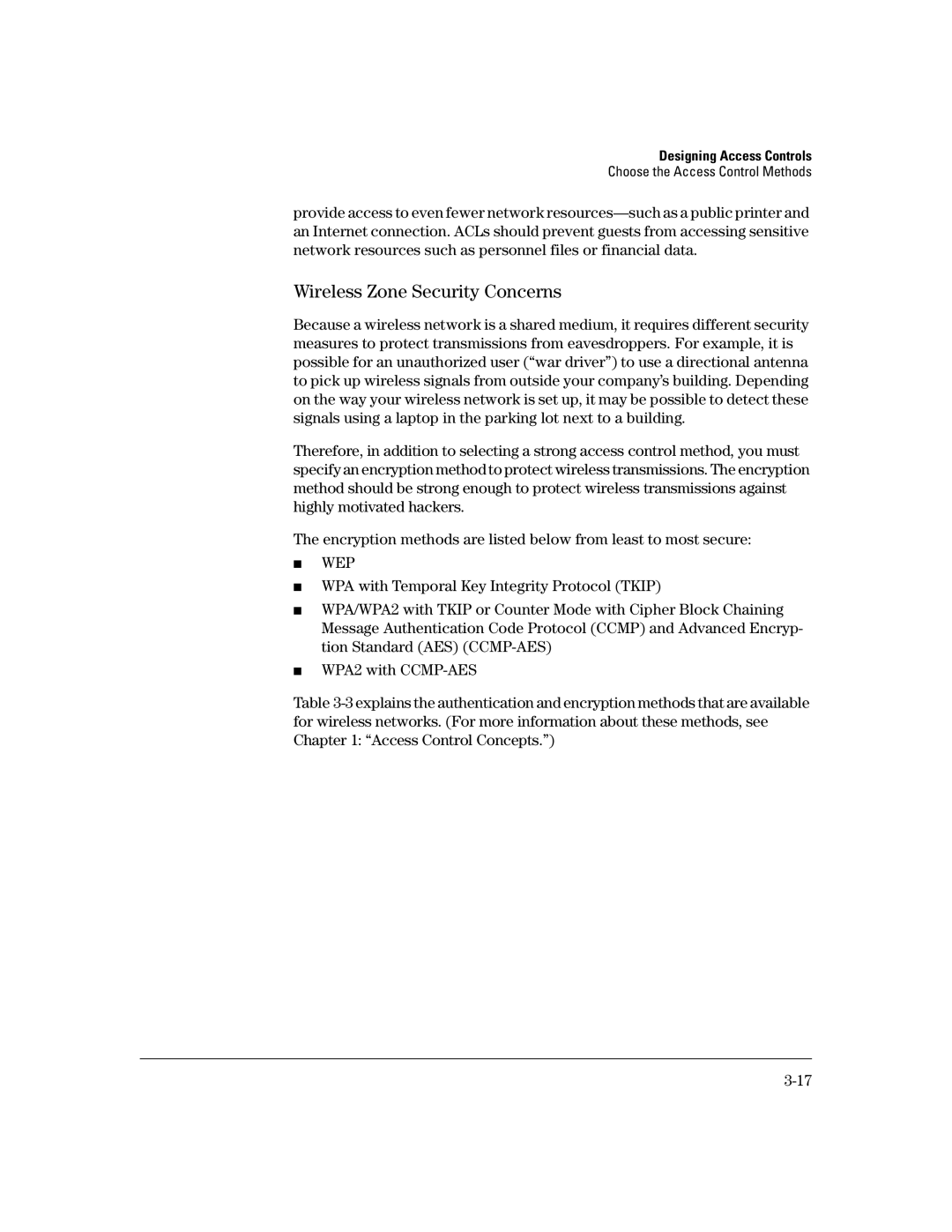Designing Access Controls
Choose the Access Control Methods
provide access to even fewer network
Wireless Zone Security Concerns
Because a wireless network is a shared medium, it requires different security measures to protect transmissions from eavesdroppers. For example, it is possible for an unauthorized user (“war driver”) to use a directional antenna to pick up wireless signals from outside your company’s building. Depending on the way your wireless network is set up, it may be possible to detect these signals using a laptop in the parking lot next to a building.
Therefore, in addition to selecting a strong access control method, you must specify an encryption method to protect wireless transmissions. The encryption method should be strong enough to protect wireless transmissions against highly motivated hackers.
The encryption methods are listed below from least to most secure:
■WEP
■WPA with Temporal Key Integrity Protocol (TKIP)
■WPA/WPA2 with TKIP or Counter Mode with Cipher Block Chaining Message Authentication Code Protocol (CCMP) and Advanced Encryp- tion Standard (AES)
■WPA2 with
Table
